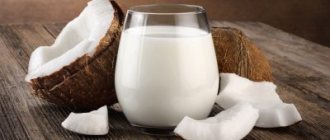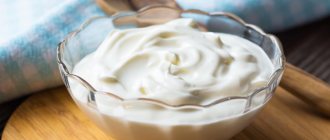Breast milk for every baby is the most important and rich nutrition, which no artificial formula can compare with. How long breast milk can be stored is a question that worries many women, since breastfeeding a baby is not always possible. Mommy needs to go to work, the baby refuses to take the breast or has bitten through it - there can be many life circumstances, but you need to feed the baby on time. Therefore, the only option is to express milk in advance for your growing child.
Can breast milk be stored in the refrigerator?
The following circumstances lead to refusal to breastfeed:
- the appearance of cracks in the mammary glands, as well as strong bites of the child in the nipple area, cause discomfort. At the time of feeding, women experience unbearable pain;
- the need to urgently leave or go to work;
- refusal or physiological inability of the child to take the breast. Premature babies do not have the strength to suck out milk on their own, so they are fed expressed milk for some time.
To ensure that the baby receives all the beneficial elements of the lactation product with food, pediatricians recommend expressing it. The choice of location is determined by the required storage time. Shelf life at room temperature is limited to hours:
- above 25 0C – up to 3 hours;
- 20-25 0С – 6 hours;
- 19-20 0C – 10 hours;
- 15-16 0C – 24 hours.
The baby food product retains freshness due to the presence in its composition of a number of components that prevent the process of reproduction of pathogenic microorganisms in it. But this period is limited, so to prolong it, doctors advise refrigerating breast milk.
Storing breast milk in bottles
Before placing expressed milk in the refrigerator or freezer, be sure to label the bottles or bags with the amount of milk and the date of expression. This will make it easier to manage your expressed milk supply.
Experts advise avoiding containers made of Bisphenol A, which is widely used in the production of transparent plastics. In Europe, this substance is called such that it causes concern for human health. According to some data, Bisphenol A can cause developmental disorders, problems with hormones, metabolism, and the reproductive system . For storage, use only glass containers, special breast milk bags or bottles that do not contain Bisphenol A (BPA). For example, in a polycarbonate bottle. If damage appears on the container, it must be replaced.
Choose small containers and apply labels. One serving should be from 60 to 120 ml. Be sure to attach a label with the date and time to the container.
To keep your expressed milk healthy longer, be sure to wash your hands before pumping and make sure your breast pump and bottles are as clean as possible. Washing in the dishwasher or in hot soapy water will help prepare everything you need to store the milk.
Appearance and taste of frozen milk
Not all mothers know that when cooled and frozen, the appearance of milk changes. Therefore, after cooling the bottle in the refrigerator for the first time, seeing the strange appearance of the contents, mothers get scared, the milk is poured out, and the children remain hungry. The fact is that the cold causes separation, fats float to the top, and a fat-free residue remains at the bottom. This does not spoil the product; you just need to shake the bottle until smooth.
Not only does the type of milk change, but the taste may also change, which the child does not always accept. The taste should not be bitter or sour. This would mean that the product is gone and it is not recommended to give it to the child.
Before giving your baby defrosted heated milk, you should taste it. If it is bitter or sour, it means the milk is gone.
Shelf life of colostrum without refrigeration
This mammary gland secretion is produced by the mother in the first 3-4 days after the birth of the baby. It is a yellow sticky liquid, the main component of which is serum albumin.
Attention! Colostrum contains less lactose and fat compared to mature breast milk, which allows the newborn's digestive system to adjust to the new food.
At room temperature not exceeding 25 0C, infants' first food product is usually stored for about 6-8 hours.
How and for how long should you store expressed milk in the refrigerator?
Containers for storing women's lactation products must meet the following requirements:
- sterility;
- possibility of heating, cooling and sterilization;
- tightness;
- simplicity and ease of use;
- presence of a measuring scale (desirable).
There are different types of containers, each of which has advantages for a certain method of storing breast milk:
- bottles;
- containers;
- packages.
The material for the manufacture of such containers is glass, plastic or plastic. Preference is given to products of the first type, with plastic containers in second place. However, there is no significant difference in terms of their use for storing mother’s milk.
If you leave it in the refrigerator, then the first two types of vessels will do. They cannot be left on the doors, but must be removed deep into the unit, where temperature fluctuations are not so noticeable. Avent bottles are very popular, the peculiarity of which is the presence of an anti-colic system. The valve equalizes the pressure, the nipple is filled only with milk and the baby does not swallow air when feeding. It is more convenient to place the bags in the freezer.
After pumping, the date and time are put on the container, because during a long period of mother’s absence there may be more than 3-5 of them. in a refrigerator. A person staying with a child can easily confuse them and use the fresher one for feeding. The old milk will gradually begin to disappear and the baby will not have enough of it before the mother arrives.
Before placing your baby's food in the refrigerator, it needs to be allowed to cool in the room for some time, since sudden temperature changes will negatively affect its quality. It is also not recommended to express milk into a container with already cooled secretions from the female mammary glands.
The lactation product should be stored in the following volume: 20-30 ml + 1 portion of the child’s food. This will eliminate the need to reheat the milk when your appetite increases. If the mammary glands produce too much secretion, then its volume is divided into several bottles.
In the refrigerator, breast milk is stored at a temperature between 2-6 degrees for about 7 days.
Attention! For sick children, the storage time of mammary gland secretions is reduced by 2 times.
Where to store milk after pumping
After expressing, the container with milk is tightly closed. Next you need to decide where you can put it. It all depends on how long you plan to store it.
- If you want to keep your milk untouched indefinitely, then freezing it is the best option. It is important to know that only fresh milk that you have recently expressed can be placed in the freezer. Be sure to let it sit in the room for several hours until it cools completely in a closed bottle. After this, without opening the container, carefully place it in the freezer. Of course, fewer vitamins remain in a frozen product, but it is still better than artificial pharmaceutical mixtures.
- In the case when a portion of mother's milk is planned to be used within 2-3 days, you can keep the container in the refrigerator. When chilled but not frozen, the product retains the maximum amount of beneficial properties. In this case, breast milk in the refrigerator should be stored on the shelf, and not on the door.
- If a child drinks a fresh product in one day, then you should not put it in the refrigerator or freezer. Keep the product in the room, in a special container that is tightly closed. The milk will not spoil in a few hours.
You should never rely on your memory - label the milk container when it has been filled and left for storage.
This will help you remember how long the product has been in the refrigerator or freezer, and whether its expiration date has expired. Storage of the product should be in portions: one container - one serving. This way you will not violate the sterility of milk storage jars.
How to give expressed milk from the refrigerator?
After removing the bottle, shake it well so that the product becomes homogeneous. If delamination occurs, it is recommended to roll the container in your hands. The child is fed milk, the temperature of which is 37 degrees. When cooled, its taste begins to change and children often refuse to drink the cold product.
Heat milk in the following ways:
- Under warm running water. Using hot liquid destroys valuable enzymes necessary for the proper development of the baby.
- In a water bath. Fill a small saucepan halfway with water and put it on the fire. At the moment of boiling, remove it to the side and immerse a bottle of milk in it for 3-5 minutes;
- Using a special heater. If necessary, several bottles are placed into the device at the same time. The principle of their operation is to heat containers with milk with steam or hot water. The former act more carefully, heating occurs evenly. According to the instructions, the process takes 3-10 minutes. Heating time depends on the type of device.
Attention! It is forbidden to heat breast milk in the microwave. It will warm up well on only one side. If parents do not control the temperature of the product, the child may get burned.
You need to taste and smell the milk. The presence of a bitter, sour taste or suspicious odor indicates spoilage of the product.
When stored, breast milk usually separates into layers and the fats (cream) it contains rise to the top. Shake the bottle gently to mix the layers before giving it to your baby. Violent stirring and shaking may destroy some of the nutritional and protective components of breast milk.
When a baby feeds expressed breast milk from a cup or bottle, bacteria from the baby's mouth naturally gets into the milk. Therefore, it is best to pour out all unfinished milk one to two hours after the first feeding. To waste as little expressed milk as possible, it is best to store it in small portions and use only as much as is needed for one feeding.
Defrosting and heating
You also need to be able to defrost expressed milk correctly in order to preserve all the microelements beneficial for the baby.
We take a container with a portion of mother's milk and move it from the freezer to the refrigerator shelf for several hours. This is necessary to avoid sudden temperature changes. When the container “moves away” a little, pour the contents into a bottle prepared in advance and lightly heat it in a regular water bath.
A bottle warmer can be an excellent helper for young mothers.
It is inexpensive and easy to use. It is possible to carry it with you, even if you plan to go outdoors. Just take the container of milk out of the freezer in advance and place it in the heater. The best part is that the milk will not overheat, and the optimal temperature for the baby will be maintained.
Let's look at some useful tips:
- Do not heat a container of milk in a saucepan or microwave, or boil the product. If this is done, the milk may lose its properties, and there will be no benefit to the child’s body.
- If after feeding there is a small amount of milk left, it is strictly forbidden to freeze it again, even for several hours, since it will lose all its beneficial microelements.
- It is not recommended to pour breast milk from one container to another several times - this not only loses its beneficial properties, but also breaks sterility.
It is important for a young mother that her baby receives healthy vitamins and microelements for proper development. No matter how much fruits and vegetables you give your baby, there is nothing healthier than mother’s milk, especially in the first months after birth. It is for this reason that storing breast milk in the refrigerator should follow all the rules.
Can breast milk be stored in the freezer?
If long-term storage of the lactation product is necessary, preference is given to freezing. In this form, milk retains its nutritional properties, but loses most of the micronutrients that are destroyed at low temperatures. The mammary glands produce a secretion of a certain composition at each period of time, so if stored for a long time, the set of useful substances will be irrelevant for the child’s body. Moreover, their quantity will be 5 times higher than in infant formula.
Defrosting milk in some cases leads to the appearance of a soapy smell; children refuse to eat such food. Therefore, the freezer storage method is recommended to be used in exceptional cases.
How to store breast milk in the freezer?
It is more convenient to freeze the product in plastic bags. Disposable containers purchased from a pharmacy are initially sterile, which reduces preparation time. They are easy to seal, completely sealed, have a measuring scale, and a place to put the date and time.
You can also use plastic or glass containers, but they take up more space in the freezer. When purchasing plastic containers, you need to pay attention to their composition. The presence of bisphenol or polycarbonate is unacceptable, so preference is given to environmentally friendly, high-quality branded containers.
Attention! When purchasing reusable containers for storing breast milk, they must be sterilized before each expression. Treatment with hot water in this case is not enough; microparticles of the product remain on the walls of the container, in which bacteria multiply over time.
Shelf life of frozen breast milk
The lactation product is left in the depths of the freezer with the condition that the containers do not come into contact with its walls. This will keep the milk at a constant temperature and prevent cold burns. Containers are filled to ¾ of the volume, since liquids expand during the freezing process.
Breast milk can be stored in the freezer for 6-12 months. Before freezing, it must cool in the refrigerator for 1.5-2 hours. If possible, it is recommended to allocate a separate compartment for storage; in other cases, products placed together should be insulated with packaging containers. The shelf life of the product depends on how often the freezer is opened.
Attention! Repeated freezing of the product leads to the loss of all beneficial qualities.
Signs that milk has gone bad
In order for breast milk to remain fresh for a long time during storage, it is necessary to adhere to sterile expression. Hands and chest should be clean, containers should be sterilized. If you neglect even one point, the milk may spoil prematurely. How to understand this?
Signs:
- The smell changes. It becomes more harsh and unpleasant. Smells sour or burnt.
- The taste changes. You can try a drop of milk. Normally it is a little sweet. If it goes bad, it becomes sour or bitter.
- The consistency changes. The breast product sours similarly to cow milk. Thick kefir is separated, and whey forms on top. If the milk has not changed consistency, but fat has separated at the top, then this is normal.
It is impossible to judge the freshness of a product by color. The shade may vary depending on the fat content. With a high fat content it is richly white or yellow, with a low fat content it has a bluish tint and is more watery.
If there are large stocks of the product left, then you should give preference to chilled and then frozen. But it should be understood that the longer breast milk is stored frozen, the worse its quality.
How to defrost breast milk?
According to pediatrician Komarovsky, breast milk can be frozen. At the same time, in order to avoid losing most of its beneficial properties, a woman should know how to properly defrost.
You cannot immediately heat a container with a product removed from the freezer. The temperature must be increased gradually. Therefore, bags or containers are first moved to the bottom shelf of the refrigerator or into a pan of cold water. The thawing process can take up to 8 hours, so milk should be taken out of the freezer long before feeding.
Then it is poured into a sterile bottle and heated to 37 degrees using the methods described above. It is impossible to lower the thermometer into milk, therefore, in the absence of a special heater. It is recommended to leave the container in a saucepan with water heated to 37-40 degrees. A thermometer is lowered into it and controlled to ensure that the level of the parameter remains constant.
Attention! Thawing at room temperature promotes the growth of pathogenic bacteria in milk.
You can store this milk in the refrigerator for no longer than 24 hours. It is better to pour out the rest of the product. If the child does not drink milk within 1-2 hours, then it is also not subject to further storage and consumption. Bacteria have entered it from the baby’s mouth, which will lead to spoilage of the product after the specified time.
Defrosting milk
Defrosting milk requires the following rules:
We recommend reading: Is cow's milk ok for infants?
Take the product out to defrost in advance, approximately 8-12 hours before use. Thaw only one serving of milk. Take the portion that has been frozen longer than the rest. Let the product thaw first in the refrigerator or sit in a bowl of cold water until the ice has melted
Just heat the melted milk further. Store thawed milk for no more than 4 hours in the room or no more than a day in the refrigerator. Before heating the milk or giving it cold to your baby, stir gently until smooth. To warm milk, use a bottle warmer that does not allow overheating above 37°C, or place the container in warm (37°C) water. It is not recommended to heat milk on the stove, in boiling water or in the microwave. Be sure to smell and taste the heated milk
Under no circumstances should a spoiled product be given to a child. Place a few drops on your wrist to make sure it is warm and not hot. The product must not be re-frozen.
If the baby has grown up and enjoys drinking cool drinks at room temperature, then it is better not to heat the milk, but to give it cool.
But always remember: the healthiest milk comes directly from the mother’s breast. By eating this milk, the child receives everything necessary for life, health and well-being.
Shelf life of rice porridge with milk in the refrigerator
The benefits of such a product for mother and child are as follows:
- enriches the body with vitamins and minerals;
- strengthens bones;
- normalizes the psycho-emotional state;
- promotes the formation of brain cells;
- normalizes weight, cleansing the body of toxins and waste;
- strengthens stool during diarrhea;
- improves the functioning of the heart muscle and kidneys.
Attention! Doctors advise eating rice porridge with milk no more than 1 r. per week, since exceeding this norm leads to oversaturation of the body with fats and the development of constipation.
When preparing this dish, it is better to use homemade cow's milk. The store-bought product contains various preservatives that negatively affect the baby’s health. The cereal is pre-washed and boiled for 7 minutes. on the water. Milk is heated with a small amount of salt and the finished rice is poured over it. The porridge is cooked for another 15 minutes, and then steamed for the same time. When serving, you can add fruit.
According to the rules, such a dish is stored in the refrigerator for no longer than 2 days, but when breastfeeding it is recommended to eat it fresh. Country cow's milk, immediately placed in the refrigerator in a hermetically sealed container, remains fresh for 2 days. After opening it, the shelf life is reduced by 2 rubles.
Cow's milk is considered an allergenic product, so when introducing it into the diet, it is necessary to monitor the baby's condition. If a rash appears on the skin within 2-3 days, or the child behaves restlessly, then you should stop eating the dish.
Storing breast milk in some cases is considered an ideal way to enrich the child’s body with the necessary set of nutrients. To ensure that a chilled, frozen baby food product does not lose its beneficial properties, a woman must follow all the rules for expressing it and keeping it under certain temperature conditions. Also, special attention should be paid to storage containers, because their characteristics can extend or reduce the shelf life of mammary gland secretions.
Video: Issue 27. How to STORE breast milk. Breast-feeding
Issue 27. How to STORE breast milk. Breast-feeding
Watch this video on YouTube
Video: How I express and STORE BREAST MILK! Storage tips
How I express and STORE BREAST MILK!Storage tips
Watch this video on YouTube
Do you want to understand better than others?
- Storing breast milk after pumping - Breast milk, which, at first glance, is just one type of nutrition for a newborn baby, actually has an incredible range of beneficial vitamins and...
- Sanitary norms, rules and hygienic standards for storing food in the refrigerator - Ignorance of certain rules for keeping food in the refrigerator leads, at best, to its spoilage, and at worst, to poisoning. To avoid such consequences, storing food at home...
- Shelf Life of Cooked Rice in the Refrigerator - Rice is one of the most common grains used in the daily diet and in some holiday dishes. The finished product contains many...
- Terms and rules for storing boiled shrimp in the refrigerator - Frozen or chilled shrimp can be bought in almost any supermarket, but the main point that you should pay attention to is their freshness. If you are buying...
- Terms and rules for storing kefir in the refrigerator - The duration and rules for storing fermented milk products are regulated by strict requirements, since the presence of active compounds in such items limits the period...










